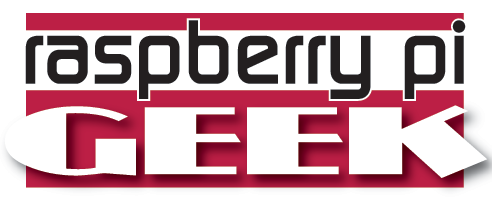IoT on Your Raspberry Pi
Coming Next Column
Next time, I take the Raspberry Pi IoT device, set it up with MQTT, and hook it up to an IoT panel, Adafruit IO [12]. Then, anyone in the world can see my IoT device!
Two Projects
My first tutorial video with O'Reilly publishing, "Introduction to the ESP8266 and the IoT" is now out [1]. In this course, I talk about how to build projects around the ESP8266 WiFi chip using Grove connectors. O'Reilly's editing and production values are magnificent. On top of that, my first book came out published by Apress called Raspberry Pi IoT Projects: Prototyping Experiments for Makers [2]. The book talks all about building a number of IoT projects using a variety of devices, but especially your friend the Raspberry Pi.
Q & A
Q: I've been watching your new GroveWeatherPi project with interest over the past couple of months. One question I have is how do I measure the power of the whole project without adding a SunAirPlus to the system?
Whitney L., London
A: Two ways come to mind. First, you can buy a cheap USB current-measuring device that plugs in-line to your Raspberry Pi. However, they aren't very accurate, and you can't get the data into a computer to make a graph. The second way would be to use an INA3221 current measuring board (Grove, of course), as I discussed in a previous issue on air quality sensors [13]. You can measure three channels of current with the INA3221 at far higher accuracy than with a cheap USB current meter.
Infos
- Introduction to the ESP8266 and the IoT: http://shop.oreilly.com/product/0636920052746.do
- Shovic, John C. Raspberry Pi IoT Projects: Prototyping Experiments for Makers. Apress, 2016, https://www.amazon.com/Raspberry-IoT-Projects-Prototyping-Experiments-ebook/dp/B01KBUY748/
- Raspberry Pi 3: https://www.raspberrypi.org/products/raspberry-pi-3-model-b/
- Pi2Grover: http://store.switchdoc.com/pi2grover-raspberry-pi-to-grove-connector-interface-board/
- Grove sunlight sensor: https://www.seeedstudio.com/Grove-Sunlight-Sensor-p-2530.html
- Grove LED: https://www.seeedstudio.com/Grove-LED-p-767.html
- GroveWeatherPi: http://www.instructables.com/id/GroveWeatherPi-Raspberry-Pi-Based-Weather-Station-/
- GrovePi+: https://www.seeedstudio.com/GrovePi%2B-p-2241.html
- "Pi on Wind" by John C. Shovic, Raspberry Pi Geek, issue 4, 2014, pg. 8, http://www.raspberry-pi-geek.com/Archive/2014/04/Sizing-a-wind-turbine-to-power-your-Raspberry-Pi
- "SunRover" by John C. Shovic, Raspberry Pi Geek, issue 13, pg. 68, http://www.raspberry-pi-geek.com/Archive/2015/13/SunRover-part-1-Track-motor-controller-power-system
- SunIOT on GitHub: https://github.com/switchdoclabs/SunIOT
- Adafruit IO: https://io.adafruit.com
- "Air Quality Sensor" by John C. Shovic, Raspberry Pi Geek, issue 18, 2016, pg. 72, http://www.raspberry-pi-geek.com/Archive/2016/18/Measuring-air-quality-with-the-Raspberry-Pi
Buy this article as PDF
Pages: 6
(incl. VAT)







